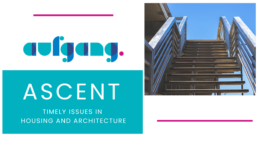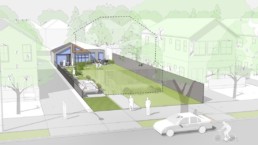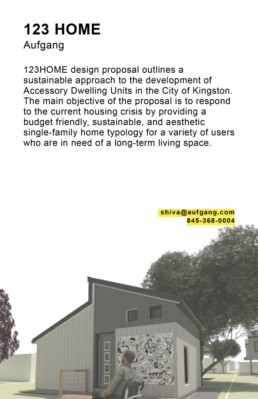
Are ADUs an Answer to the Housing Crisis?
Across the country the housing crisis is converging with economic and demographic trends to continue to drive proliferation of Accessory Dwelling Units—ADUs. Most ADUs are informal, rather than permitted, prompting cities to revise their zoning ordinances and residential development codes as they struggle to encourage housing supply growth.
“Permitted ADUs will become more prevalent as local governments increasingly recognize that most households in the United States are now comprised of only one or two persons. In part this reflects our aging population. However most legacy single-family homes and new homes are sized for families of four or five. High home prices and mortgage interest rates also put conventional size homes out of reach of many prospective buyers, especially individuals and seniors” said Aufgang Principal Ariel Aufgang, AIA.
An innovative approach to encouraging permitted ADUs was recently announced by New York City Department of Housing Preservation and Development Commissioner Adolfo Carrion, Jr.: a new “Plus One ADU” pilot program. This initiative provides funds to a small number of single-family homeowners to build ADUs on their property, with an eye toward implementing a citywide ADU program.

ADUs can be in the form of backyard cottages, garage studios, attached in-law suites, basement apartments and attic space conversions. They usually have their own kitchen, bathroom, living area and separate entrance. Typically, they utilize the water and energy connections of the primary house.
Although ADUs can be a viable solution to the housing shortage and a steady income stream for homeowners, a careful cost/benefit analysis is needed before implementation. ADUs can involve large upfront costs in materials and construction labor. Once completed, the homeowner’s property taxes may go up, and the utility bills may increase. Before building, the homeowner should calculate the costs against the increase of value in the property and new income stream to determine if the project is worthwhile.
New York City homeowners interested in applying for this program need to access a Plus One ADU Participant Survey by February 13, 2024.

Although New York’s ADU program is being launched for single-family homeowners, the program could extend to multifamily properties as well. California already allows one or more ADUs on multifamily properties, depending on restrictions such as city codes and zoning laws. ADUs can either be detached from the main structure or converted from accessory space such as storage rooms, basements, or attics.
Developers can also partner with municipalities to assist in ADU initiatives outside of New York City. A recent initiative called the Plus One Home Program launched in Kingston, New York as a partnership between RUPCO, Ulster County, and the City of Kingston. As other counties and towns develop strategies to address the housing crisis, more opportunities will appear in the near future.
